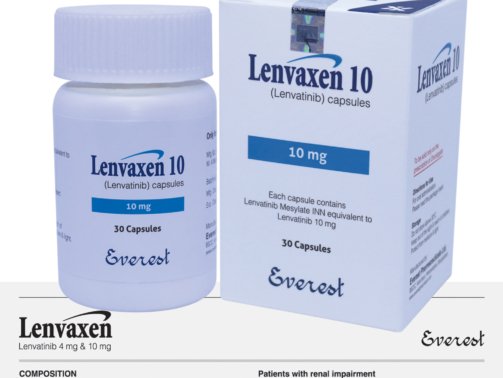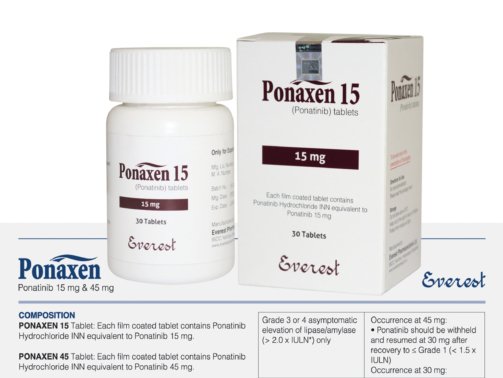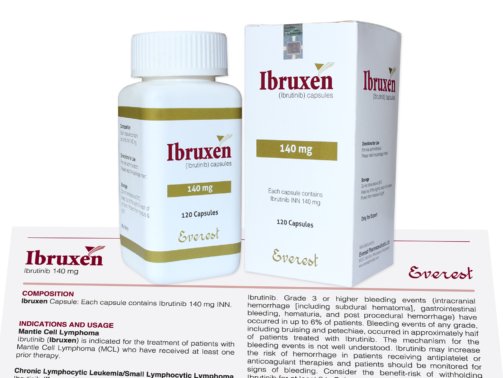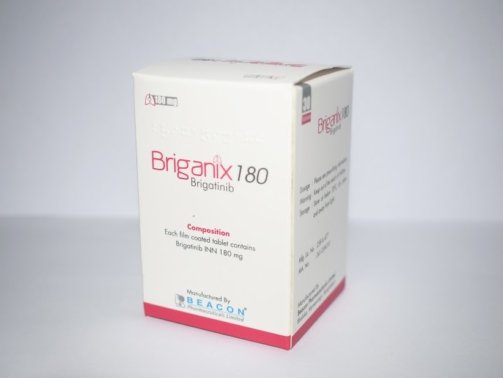Azacitidine 300 mg (Vidaza)
0.00$
Azarest, containing Azacitidine as the active ingredient, is prescribed to adult patients diagnosed with intermediate-2 and high-risk myelodysplastic syndromes (MDS), including chronic myelomonocytic leukemia (CMML). Azacitidine acts as a demethylating agent by incorporating into DNA and RNA, leading to DNA hypomethylation and direct cytotoxic effects on abnormal hematopoietic cells. The recommended dosage of Azarest is 300 mg administered subcutaneously or intravenously once daily for 7 days, followed by a 21-day rest period, with treatment cycles repeated based on patient response. Common side effects include gastrointestinal symptoms, fatigue, and hematologic abnormalities, while serious adverse reactions may include bone marrow suppression and infections. Close monitoring for adverse effects and appropriate supportive care are essential in case of overdose, as there is no specific antidote available.
Azacitidine 300 mg is a drug that is mainly used to treat hematologic cancers such as acute myeloid leukemia (AML) and myelodysplastic syndromes (MDS). It is a member of the class of medications known as hypomethylating agents, which includes anticancer treatment. The main features of Azacitidine will be covered in this thorough explanation, including its mode of action, therapeutic applications, dose and administration, adverse effects, and safety measures.
Mechanism of Action
The way that azacitidine 300 mg functions is by blocking DNA methyltransferase, an enzyme that gives DNA methyl groups. Tumor suppressor genes and other genes can be turned off by methylation, which permits cancer cells to proliferate unchecked. Through the inhibition of this enzyme, azacitidine triggers the re-expression of genes that have been silenced, including those that may prevent the growth of tumors. Furthermore, the medication disrupts the creation of proteins and RNA, which eventually results in the death of aberrant blood cells in conditions like AML and MDS.
It is crucial to remember that azacitidine functions by altering the environment of cancer cells, encouraging normal cell differentiation, and slowing the growth of aberrant cells rather than by killing cancer cells directly. In some circumstances, this hypomethylating activity aids in the restoration of regular cellular function, which improves the control of malignant growth.
Therapeutic Uses
Azacitidine 300 mg is mostly prescribed to treat myelodysplastic syndromes (MDS), a class of illnesses brought on by abnormal or malformed blood cells. Because MDS can develop into acute myeloid leukemia (AML), early management is essential. For AML patients who are not suitable for rigorous chemotherapy, azacitidine is also administered. The medication is frequently used as a component of a long-term therapy regimen, which helps people with certain blood malignancies live longer and have better quality of life.
Azacitidine 300 mg functions in MDS by raising blood cell counts, especially platelets and red blood cells, which can be excessively low in MDS patients. The medication can enhance patient outcomes and lessen the need for blood transfusions. Azacitidine can increase remission rates and survival in AML when used with other chemotherapy drugs.
Dosage and Administration
Usually, azacitidine 300 mg is given intravenously or as a subcutaneous injection. MDS and AML are typically treated with a daily dose of 75 mg/m² of body surface area for the first seven days of a 28-day cycle. Depending on the patient’s reaction to treatment or the emergence of adverse effects, the dosage may be changed.
Dosage modifications can be required for people with hepatic or renal impairment. Given the possibility of severe adverse effects, the medication should only be given under the guidance of a medical expert who has knowledge of handling chemotherapy chemicals.
Side Effects
Azacitidine 300 mg has a mild to high risk of adverse effects, despite its potential effectiveness in treating MDS and AML. Among the most typical adverse effects are:
Gastrointestinal Problems: Constipation, diarrhea, vomiting, and nausea are commonly reported.
Hematologic Toxicity: Myelosuppression brought on by azacitidine can result in low blood counts, including anemia, thrombocytopenia, and neutropenia. This may raise the chance of exhaustion, bleeding, and infections.
Injection Site Reactions: Patients may encounter pain, redness, or swelling at the injection site because azacitidine is frequently given via injection.
Due to the drug’s effect on blood cells and general cytotoxic nature, fatigue and weakness are frequent side effects.
Liver poisoning, kidney issues, and irregular heartbeat are more severe but less frequent adverse effects. You should get medical help right away if you experience severe side effects or any indications of an allergic response.
Precautions and Contraindications
This medication should not be taken by those who are known to be hypersensitive to azacitidine or any of its constituents. Patients who already have liver or kidney issues should use the drug carefully because it is metabolized in the liver and removed by the kidneys.
Throughout treatment, blood cell counts must be regularly checked since azacitidine inhibits bone marrow activity. Treatment delays or dose modifications may be necessary for patients with low blood counts. Azacitidine 300 mg should not be taken during pregnancy due to the possibility of teratogenic consequences, and women who are capable of becoming pregnant should use effective contraception both during and for at least three months following treatment.
Conclusion
Azacitidine 300 mg is a crucial drug for treating acute myeloid leukemia and myelodysplastic syndromes, providing a lifeline for those unable to handle conventional chemotherapy. It functions by preventing DNA methylation, promoting normal cell differentiation, and slowing the growth of aberrant cells through a new mechanism. Even though it may help patients, azacitidine has serious adverse effects and needs to be closely watched. Healthcare professionals must carefully monitor this medication’s treatment, taking into account each patient’s unique characteristics and therapeutic response.
Order Now At Mdx Pharma bd….
To order from MDX Pharma BD, visit their website at https://mdxpharmabd.com, where you can browse products and place orders online. For inquiries or orders via email, contact emedicarepharma@gmail.com. Alternatively, call (+88) 01929123476. Their address is 29, Abdullahpur, Uttara, Dhaka-1230, Bangladesh.
Q. Can AML be cured by azacitidine?
Usually used to treat active AML, azacitidine is a hypomethylating drug that stops leukemia cells from growing. As a maintenance medication, azacitidine has been demonstrated to be beneficial for patients who are unable to handle severe treatment.
Q. Which treatment is most effective for AML?
Chemotherapy, targeted therapy (including monoclonal antibody therapy), and allogeneic stem cell transplantation are possible forms of treatment. The alternatives for treatment are the same for adults and children. A full remission of AML is the aim. Complete remission in AML refers to blood counts that are normal, according to tests.
| Product Name | Azarest |
|---|---|
| Generic Name | Azacitidine INN |
| Formulation | Tablet |
| Available Pack Size | 14 Tablets |
| Available Strength | 300 mg |

 Cart is empty
Cart is empty 



